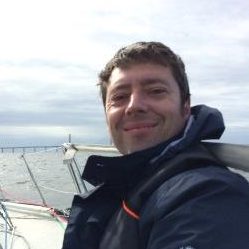
Graham Banks
Exploration geoscientist
The Geological Survey of Denmark and Greenland
Graham is a senior exploration geoscientist with 14 years industry experience (gold, critical metals, cobalt, petroleum) and most recently 2 years research on critical metals project evaluation methods. A natural explorer with a business focus. Most of his experience has been in greenfield exploration from continent to deposit scales. He also generated prospects to drill-ready status and has worked at the rig during gold and petroleum exploration drilling. He is an entrepreneur, as all explorers should be, and raised EU funding to start an exploration consultancy company. He has worked in a mid-tier and in a junior exploration company, and 3 geological consultancies, thus his exploration work is always with a commercial focus.
Graham's expertise lies in exploration strategy and new ventures, systematically evaluating projects through nation to ore shoot scales. His geoscience approach is to determine a project's probability of success, uncertainty, risks and weakest links. He encourages team collaboration, listening and cohesion, because exploration value is not created by acquiring data, but when a diverse range of specialists work well and respectfully together. Clear communication of geoscience across Engineering, Commercial, Business Development, Socio-Environmental and Governance stakeholders is fundamental to success.
A systematic, repeatable, low-cost method to evaluate critical metals provinces, with example from the Gardar Rare Earth Elements Province, Greenland.
The Rare earth elements (REE) exploration sector conducts most evaluations at mineral deposit to rock fragment scales. It is not evident how the sector performs a preceding exploration stage—rating and prioritising mineralised provinces—to determine which are prospective enough to warrant exploration investment.
Here is an objective, repeatable, low-cost method to screen any REE province before financing district-scale exploration. It is original for REE screening, yet adapted from the standard practise screening methods used in copper, petroleum and CO2 storage sectors. This method integrates geoscience, strategy, economic and socio-environmental factors in a way that is intuitive and directly usable across stakeholder groups.
The workflow determines a mineralised province’s favourability for potential value creation, by identifying:
Its main information gaps.
Its weakest links.
Its exploration maturity and remaining endowment potential.
How it compares against other REE provinces.
If further investigation is justified.
Application of the method is shown using the Gardar REE Province of Greenland because it has been, “considered to represent the most important area of REE resources in Europe” and contains, “a world class REE deposit”. We conclude that Gardar REE Province is a moderate size, frontier province of currently questionable favourability for value creation. The current weak links need strengthening by research, government policy and industry stakeholders together:
Evaluate the mineral system.
Integrate all information geospatially and place it in the public domain.
Help the region improve some community health and safety issues.
Convert some mineral resources into an Ore Reserves category.
Commence mining and sales production.
Key words: REE; province; screening; favourability; value.
